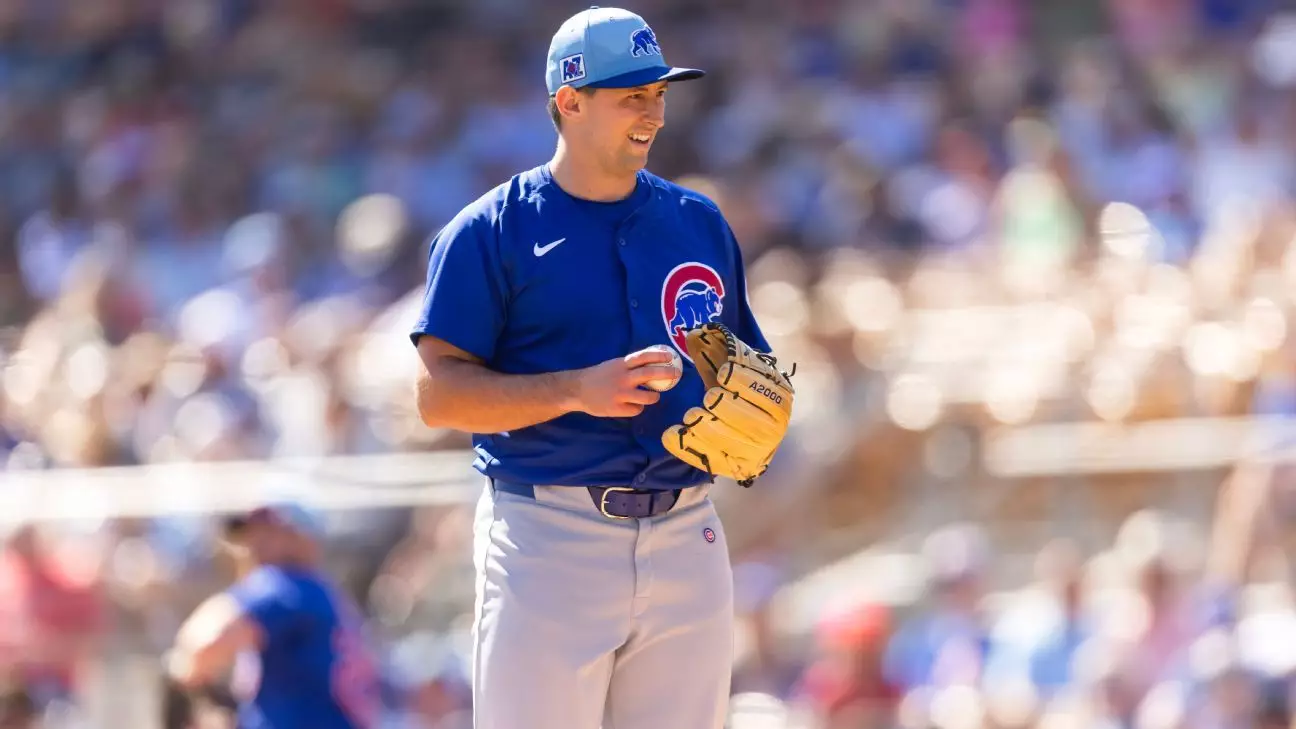In a groundbreaking moment during the recent spring training game in Glendale, Arizona, the Chicago Cubs’ pitcher Cody Poteet made history by becoming the first player to challenge a ball/strike call under a newly trialed system in Major League Baseball (MLB). This moment not only highlighted a significant shift in umpiring protocol but also echoed the ongoing dialogue about technology’s evolving role in sports. Acquired from the New York Yankees for star player Cody Bellinger, Poteet’s decision to challenge a call throws into sharp focus the future of officiating in baseball, where traditionalists and modernists will inevitably collide.
The incident unfolded during the Cubs’ opening spring training match against the Los Angeles Dodgers, when the umpire, Tony Randazzo, ruled a low fastball delivered to Dodgers infielder Max Muncy as a ball. Convinced it had grazed the corner of the strike zone, Poteet employed the novel signal of tapping his head—indicative of his wish to utilize one of MLB’s limited challenges. What transpired next was a revelation; the scoreboard displayed the pitch’s trajectory and ultimately overturned the call, granting Muncy a dire count of 0-2 which culminated in a strikeout. For Muncy, being at the center of such a pivotal moment was a mix of nervousness and excitement, ultimately labeling himself as ‘the first one’ to experience the challenge system live.
MLB is not simply throwing technology at the problem without reflection; the system draws from years of successful trials in the minor leagues. Players retain the ability to challenge two calls per game—essentially creating a capacity for players to have some control over umpire decisions. However, this is not an all-out eradication of human judgment; only players directly involved in the pitcher-catcher-batter dynamic can make this challenge. Poteet’s familiarity with the system from previous seasons in the minors served him well, enabling him to leverage this technological aid with both confidence and clarity.
Yet this raises an interesting conversation about the future of umpires in the game. As the line blurs between traditional and tech-enhanced officiating, the substantial question is whether the balance between human perception and technological precision can be maintained without diminishing the character of baseball itself.
While the initial challenge garnered a successful reversal, not all attempts were fruitful; Cubs catcher Pablo Aliendo was unable to overturn a subsequent ball call, demonstrating an almost fifty-fifty split that is reflective of earlier minor league statistics. This statistical balance continues to feed into the debate about the reliability of the system. Muncy himself expressed skepticism about its readiness for regular season play, insisting that players must have absolute certainty before contesting a call. As much as this system could eliminate egregious errors, it could equally lead to delays and additional second-guessing of the umpires’ calls.
MLB’s strategy revolves around gathering data and feedback from players during spring training, which totals over 60% of games in the Cactus and Grapefruit leagues implementing the challenge system. This data gathering underscores the league’s commitment to adjusting the game based on the realistic needs and opinions of those directly involved in the sport. With the possibility of rolling this out as early as 2026 for regular season play, there could become a time when such technology is normalized, integrating seamlessly into fans’ and players’ experiences.
As the Cubs triumphed over the Dodgers in their first outing of spring training, one can not help but speculate about what this means for the sport’s future. The historical first-use of the challenge system serves as an inflection point in Major League Baseball, promising to reshape the way games are officiated and perhaps even altering the rhythm of play itself. As players, coaches, and fans weigh in, the dialogue regarding the marriage of time-honored tradition and the relentless march of technological advancement will undoubtedly continue. Whether we find ourselves nostalgic for the past or excited for what’s next, the evolution of baseball officiating is poised to make its mark.

